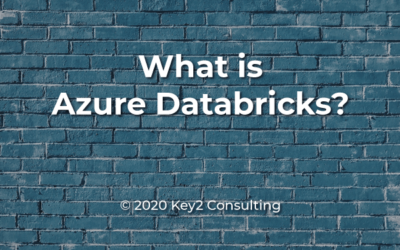By: Kash Sabba
Cloud-based product offerings have been on the rise over the last few years. Microsoft Azure, AWS, Google Cloud, and Snowflake are some of the big players that dominate today’s cloud space.
Each company offers a suite of cloud products for different use cases. As a result, the product list can get overwhelming, especially if you are new to the world of cloud technology.
But what exactly is a cloud solution? What is an example of a cloud solution? In order to choose the right cloud technologies for our initiatives, we must first make sure we understand what a cloud solution generally looks like and what one should accomplish.
Here are two examples (with today’s relevant cloud technologies included) to help illustrate what a could solution looks like.
Cloud Solution Example for Retail
It all starts with the business problem and how data at scale can help solve the problem. Typically it makes sense to leverage a combination of a few cloud products from one vendor to solve the problem.
For example, an enterprise retail customer wants to leverage historical and real-time sales data to provide real-time product recommendations to their clients through an application.

A cloud solution to solve this business problem will require several technologies working in unison to provide value, as follows:
- A NoSQL database with low latency, such as a document database to store information on the products and a front-end application that will interact with the NoSQL database
- A data warehousing technology to ingest and store all historical sales data from the NoSQL database
- An advanced analytics engine that will read and process historical data from the data warehouse and streaming data from the front-end application to generate product recommendations
- The product recommendations are pushed to the front-end application
For instance, NoSQL document database can be an Azure Cosmos DB or AWS DynamoDB. The data warehouse can be Azure Synapse or AWS Redshift. The advanced analytics engine for predictions/recommendations can be Azure Databricks or AWS SageMaker.
Cloud Solution Example for a Trucking Company
Similarly, a trucking company could leverage location data from GPS beacons installed in trucks to help move consumer goods efficiently by providing regular updates to truck drivers through an app.

A cloud solution to solve this problem will also require a few technologies working together, as follows:
- The GPS beacons provide streaming location data to a streaming hub location in the cloud through an app
- The streaming GPS data gets reconciled with store demand data, weather data, live traffic data, and other GPS data from other trucks in the vicinity by an advanced analytics platform
- A prediction model will compute probability metrics for truck route based on store demand, weather, live traffic, and other trucks in the vicinity. The prediction score will be translated into a qualitative destination choice-set
- The destination choice-set will be pushed to the app where the truck driver can find a list of places to deliver the consumer goods
- The streaming GPS data will get converted to batch data and stored in a data warehouse for historical analysis
To implement the above solution, a streaming hub can be leveraged in Azure Event Hub or AWS Kinesis. The store-based demand data can be stored in Azure Data Lake Storage Gen2 or AWS S3 buckets.
The data from the streaming hub and store-based demand data can be reconciled into a probability based destination choice-set using an advanced analytics platform such as Azure Machine Learning Service or AWS SageMaker. The destination choice-set model can be hosted as an endpoint on the advanced analytics platform. The result set can be pushed back to the truck driver through an app.
Conclusion
Choosing the right cloud stack requires deep understanding of the problem and knowledge of the technology stack. It’s also good to know if there is an existing solution that is implemented on premises today. If there is a solution on premises, a cloud stack offers similar technologies that can be leveraged seamlessly.
Most of the cloud products offer pay on demand options. Data storage, on average, is the cheapest option. Compute costs can vary widely depending on usage. Before investing heavily in one suite of cloud technologies, it’s good practice to do proof of concept benchmark tests to compare similar technologies for performance, usability, and cost efficiency.
Questions?
Thanks for reading! We hope you found this blog post useful. Feel free to let us know if you have any questions about this article by simply leaving a comment below. We will reply as quickly as we can.
Keep Your Data Analytics Knowledge Sharp
Get fresh Key2 content and more delivered right to your inbox!
About Us
Key2 Consulting is a boutique data analytics consultancy that helps business leaders make better business decisions. We are a Microsoft Gold-Certified Partner and are located in Atlanta, Georgia. Learn more here.




